Track the sun efficiently while outdoor cooking with these straightforward tips. First, scout your location by observing sun patterns and identifying shaded areas. Second, use a simple pole-shadow method to monitor sun movement throughout the day. Third, position your reflector panels at 60 degrees and adjust every 20 minutes for peak heat capture. Fourth, consider setting up an automated tracking system with basic Arduino components for hands-free operation. Fifth, maintain proper temperature checks using the hand test method or thermometer readings. These fundamental techniques can transform your outdoor cooking game, and there's even more to discover about maximizing solar heat.
Location Scout for Optimal Sunlight
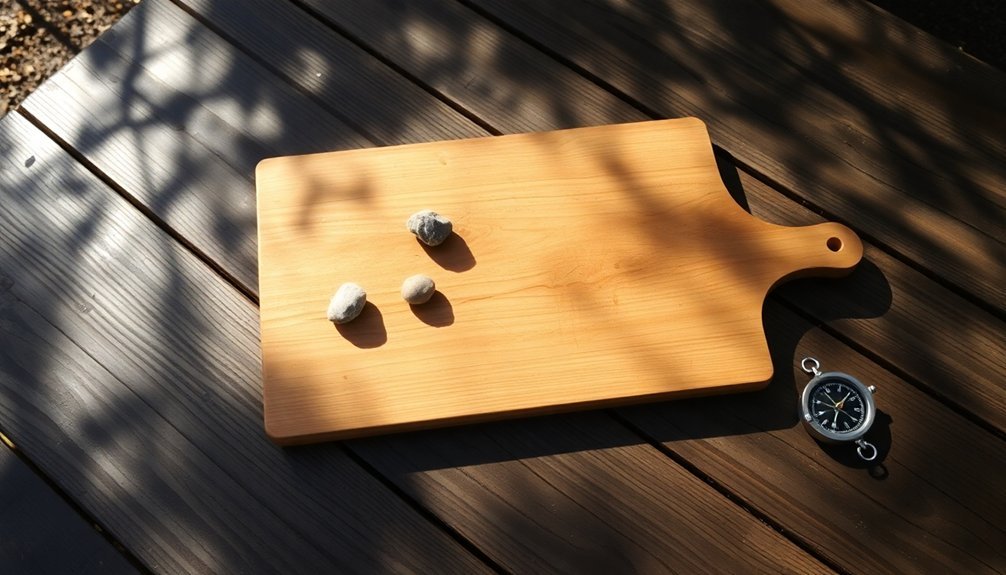
When scouting the perfect location for your outdoor kitchen, balancing sunlight and shade becomes essential for a comfortable cooking experience.
Start by observing how the sun moves across your yard throughout the day, identifying areas that offer natural protection from intense rays.
Look for spots where existing trees or vines can provide natural shade while maintaining good ventilation. These living features create a built-in misting system through transpiration, helping keep you cool while cooking. Consider the quick utility access when positioning near shaded areas to ensure efficient plumbing and electrical installations.
If natural shade isn't available, you'll want to contemplate adding pergolas or trellises to create controlled sun exposure.
Position your cooking area to take advantage of scenic views while ensuring you're protected from direct sunlight during peak cooking hours.
Sun Angle Monitoring Methods
Understanding how to track the sun's movement is essential for successful outdoor cooking. You'll need to monitor the sun's position regularly using simple yet effective methods. Stick a straight pole in the ground and watch its shadow – when the sun is high, the shadow points east, helping you align your cooking setup.
For precise alignment, use your analog watch as a compass: point the hour hand at the sun, and the line bisecting between the hour hand and 12 o'clock indicates south (or north if you're in the southern hemisphere).
When working with reflectors, position yourself as if you're the sun and check if the reflection hits your target area correctly. Remember to adjust your cooker every 20 minutes for panel types or every 10 minutes for parabolic models to maintain ideal exposure. The angle of reflection will always match the angle at which sunlight hits your reflector surface.
Reflector Panel Positioning Tips
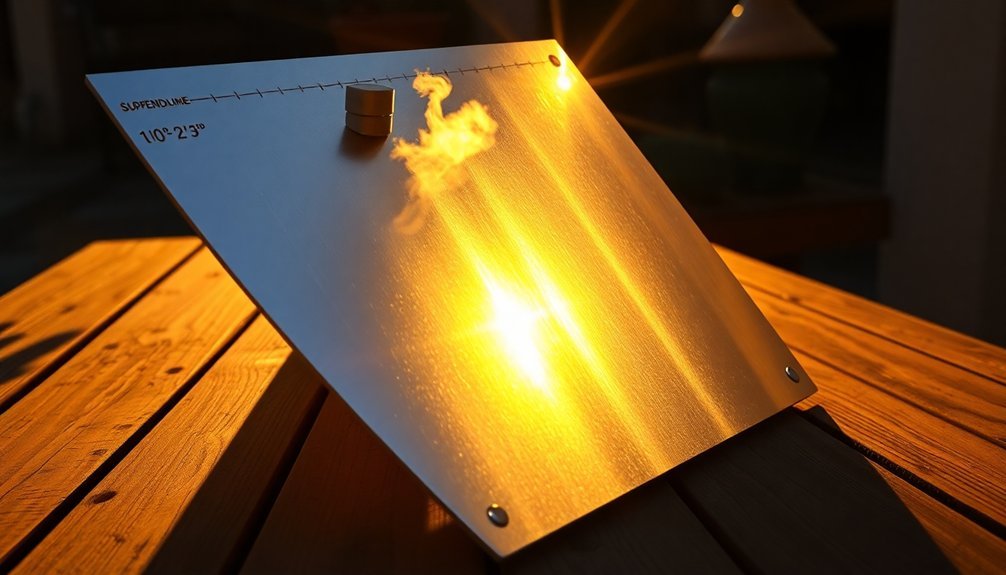
Proper reflector panel positioning maximizes your solar cooker's efficiency. Set your reflector panels at a 60-degree angle from the cooker's face as a starting point, but be ready to adjust between 30-60 degrees based on the sun's position.
Ensure your top reflector directs sunlight to the opposite side of your target area, while keeping the bottom reflector at a shallower angle for low sun conditions.
You'll know you've positioned the panels correctly when all sun rays hit your cooking surface – use a bright-colored object to verify this. For clear, concise summaries, maintain a written log of successful panel positions throughout different seasons. For precise adjustments, keep a protractor handy.
Don't forget to reposition your reflectors every 2-3 days to maintain peak performance.
If you're using a parabolic design, you can flex the reflector shape seasonally to adapt to changing sun angles.
Automated Tracking Setup Guide
Setting up an automated solar tracking system revolutionizes your outdoor cooking experience.
Start by mounting an Arduino Nano or UNO board as your control center, then attach two SG90 servo motors to handle the movement. You'll need to position four photoresistors strategically around your solar cooker to detect sunlight from different angles.
Connect the components to a 5V power supply and solder them onto a PCB or breadboard.
Once the hardware's ready, upload the Arduino code that includes the servo library and sensor reading functions. Make sure you've set an appropriate error margin for precise tracking.
Test your setup using a bright light source before actual use. This automated system will keep your solar cooker perfectly aligned with the sun throughout the day, maximizing your cooking efficiency.
Temperature and Time Checks
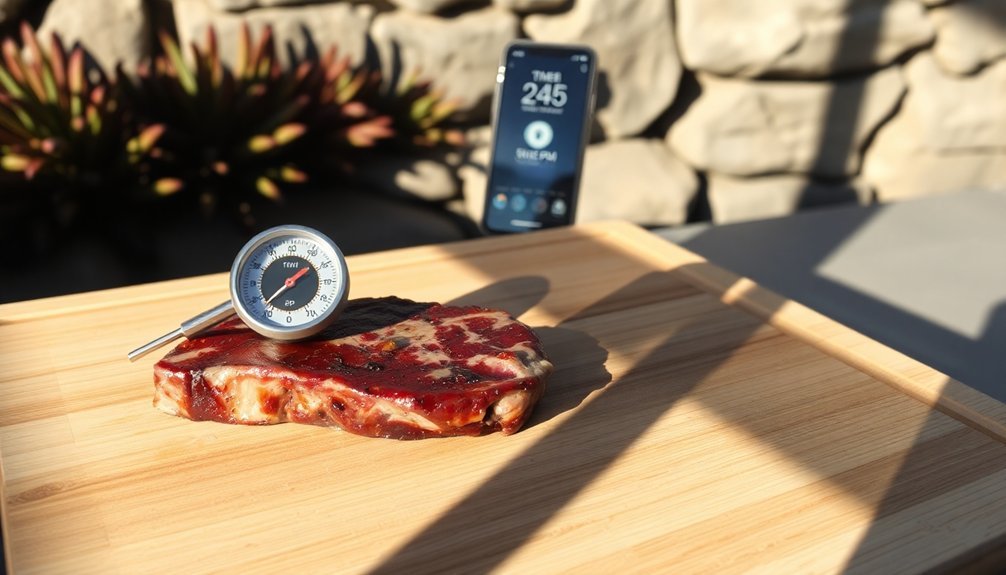
To guarantee your outdoor cooking success, mastering temperature control and timing is essential.
You'll want to start by using the hand test method, holding your palm 3 inches above the cooking surface. For precise readings, use a thermometer placed at multiple grill points, ensuring even heat distribution across your cooking area.
- Test high-heat zones (450-500°F) when your hand lasts only 1-2 seconds above the grill
- Monitor internal temperatures: 160°F for burgers, 145°F for steaks, 165°F for poultry
- Adjust cooking times based on meat thickness: 3-5 minutes per side for burgers, 5-6 for chicken
- Factor in environmental conditions like weather and charcoal type, as they'll affect your grill's temperature
Remember to let your meats rest for 5 minutes after cooking to enhance flavor and juiciness.
Frequently Asked Questions
Can I Use a Solar Oven on a Cloudy or Partly Cloudy Day?
You can use a solar oven on partly cloudy days, but it'll work much slower and less efficiently. On fully cloudy days, you'll likely struggle to cook effectively, losing up to 80% of normal performance.
What Safety Precautions Should I Take When Handling Reflective Surfaces in Sunlight?
When handling reflective surfaces in sunlight, you'll need to wear sunglasses with UV protection, cover exposed skin, use sunscreen, and avoid direct eye contact with reflective materials to prevent burns and eye damage.
How Do I Prevent Strong Winds From Affecting My Solar Oven Setup?
You'll need to secure your solar oven with bricks or blocks, place it in a sheltered location, and add stability with weights. Use bungee cords or ropes to anchor it, and choose wind-resistant materials.
Will Cooking Times Vary Significantly Between Different Seasons of the Year?
Yes, your cooking times will vary considerably between seasons. You'll need longer in winter due to lower sun intensity and shorter days, while summer's stronger sunlight and longer days enable faster cooking.
What Backup Power Options Exist for Automated Tracking During Unexpected Weather Changes?
You can use a small UPS or portable solar generator to power your tracking system. UPS provides short-term backup during brief weather changes, while solar generators offer longer-lasting power for extended cloudy periods.
In Summary
You'll find solar cooking success comes down to staying observant and making adjustments throughout the day. Whether you're using manual tracking methods or automated systems, keep monitoring sun angles and temperature levels. Don't forget to reposition your reflector panels as needed. With these tracking techniques in your outdoor cooking toolkit, you're ready to harness the sun's power for perfect meals every time.

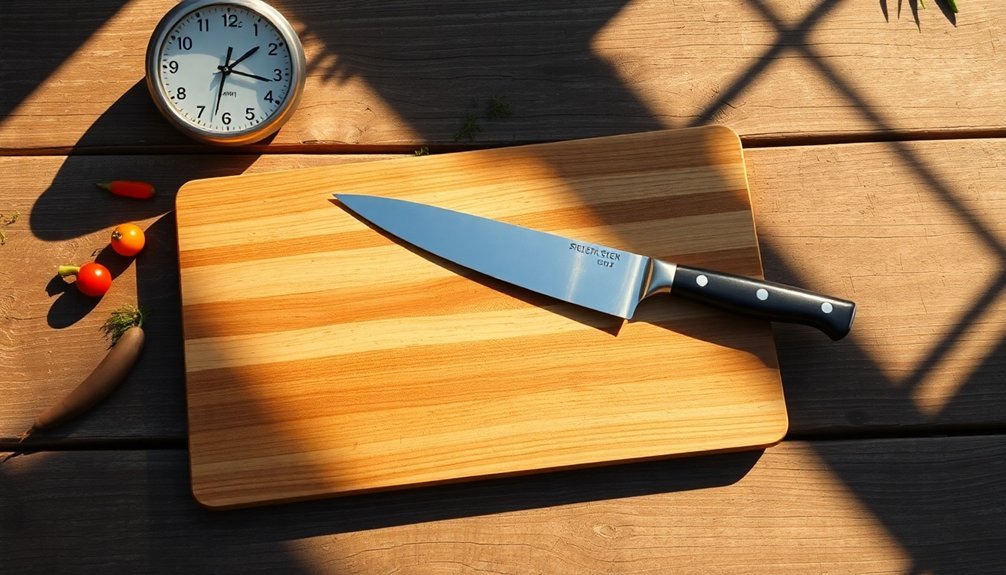
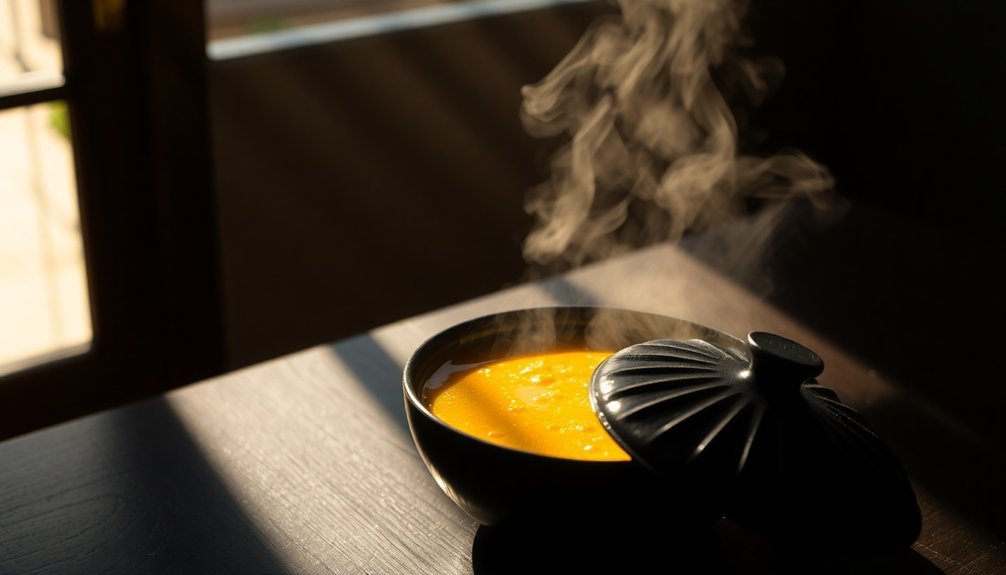
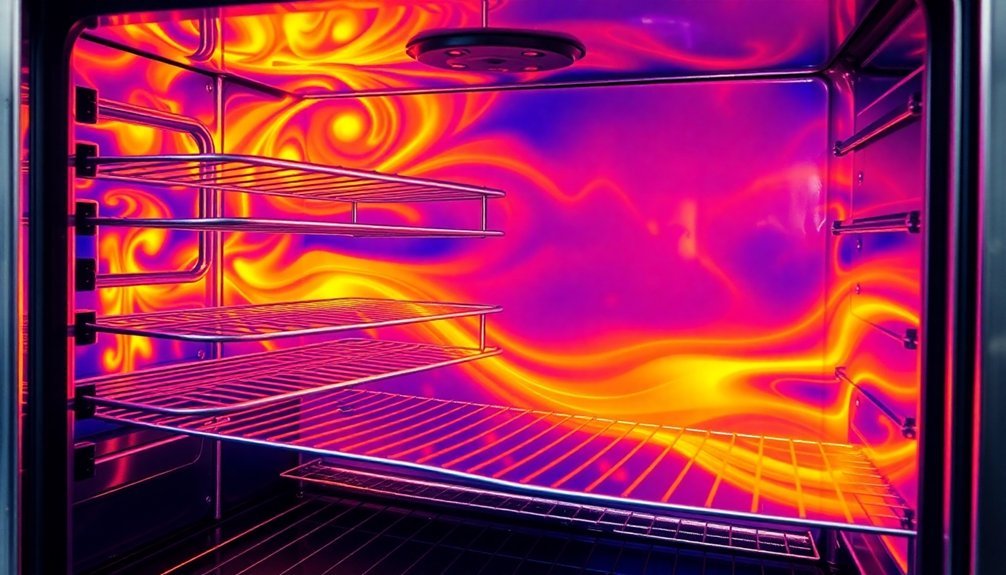
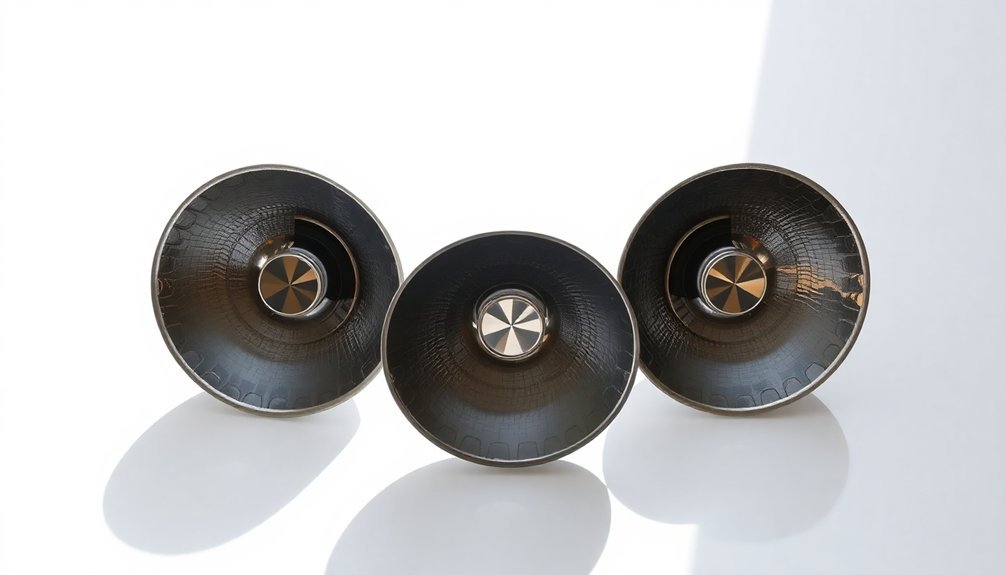
Leave a Reply